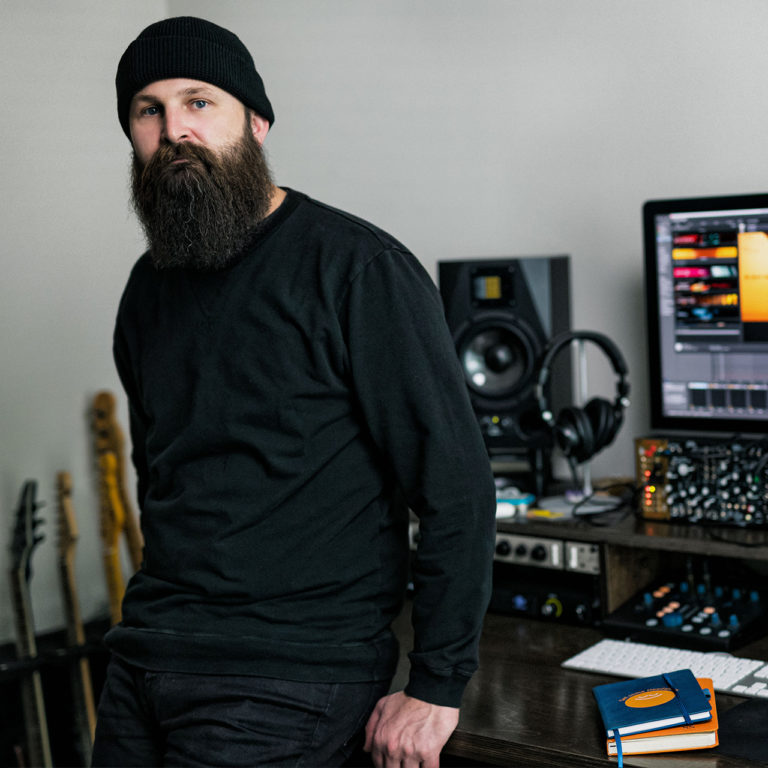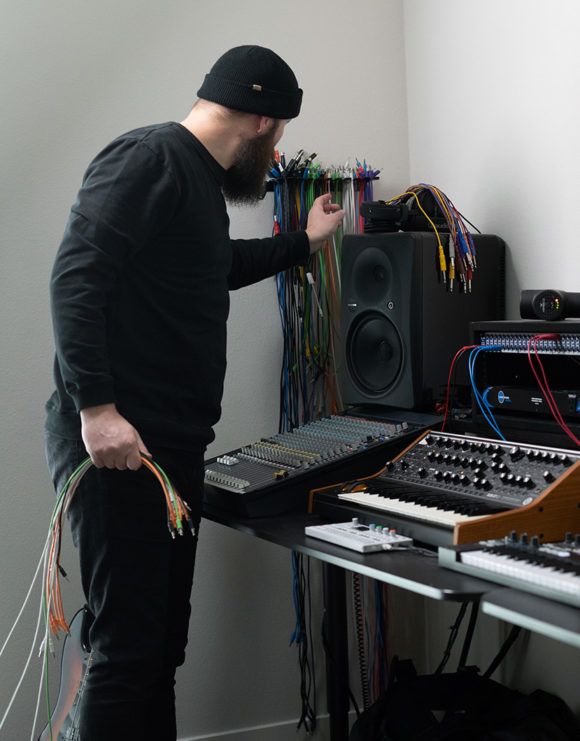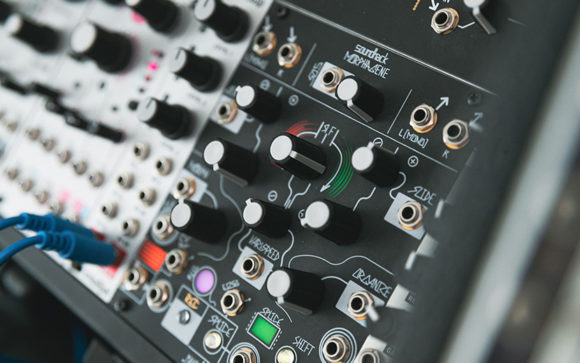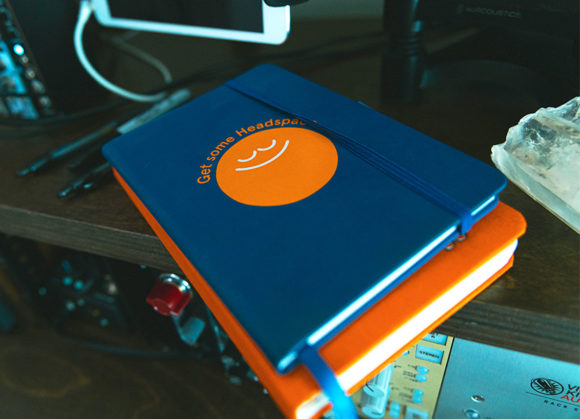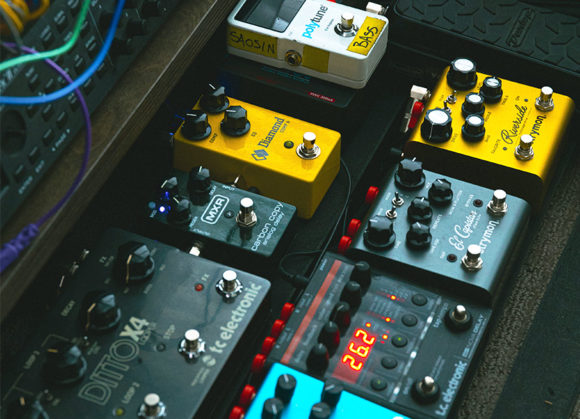The current global crisis has brought mental health into sharp relief at the broadest societal level, and put meditation and mindfulness at the top of the wellbeing agenda. As a result, the stressed-out public are flocking to meditation apps like never before, and without doubt the most popular of those apps is Headspace.
Taking a scientific – as opposed to metaphysical – approach to mindfulness, Headspace offers a wide range of meditations of between one and twenty minutes in length, aimed at addressing anxiety, stress, sleep issues and more. Claiming over 60 million users in 190 countries, the subscription-based service has proved phenomenally successful since its launch in 2010 – and the man behind its chilled-out sounds and music is Audio Design and Production Manager Scott Sorenson.
Scott’s work features in Headspace’s Sleep, Move, Focus and Wake Up modes, but he’s also responsible for the recording and mixing of Headspace co-founder and ex-Buddhist monk Andy Puddicombe’s voiceovers – a key element of the app’s functionality and identity. With the two working together remotely during the COVID-19 lockdown to create content for Headspace’s free ‘Weathering The Storm’ collection of meditation exercises, as well as the daily ’Wake Up’ morning mini-meditations, now feels like the perfect time to quiz Scot on his musical and sound design story, as well as the role that NI software has played in it.
How did you end up at Headspace?
I sort of fell into it. I’d been touring for a number of years with my brother, selling t-shirts, playing bass in a few different bands and everything in between. After meeting my wife, I headed back to LA to try to shift my direction with music. I was taking small jobs around town, editing vocals, playing bass on sessions, scoring small indie video games — that sort of thing. Nothing ever really broke for me.
A number of years passed, then my brother mentioned that he had a job for me recording voiceover for a meditation app. I met with the team and we all hit it off pretty well. That was a little over four years ago, and it was the best decision I ever made.
The job didn’t actually involve producing music at first, then?
When I started working for Headspace, the company was only focused on doing meditation content and short films about users. I was hired to record, edit and mix co-founder Andy’s voice in the app. My manager at the time was the head of film and audio, and he would show me cuts of his films. I offered to score some of them. I had KOMPLETE 8 at the time, so I would use some of the pianos or SESSION STRINGS, MASSIVE, etc, to help elevate the emotion of the films. So I just slid into what would become all these different projects, from films to different modes in our app, like Sleep and Move, to sound design. Any time anyone asked if I could do something related to audio, I would always say yes.
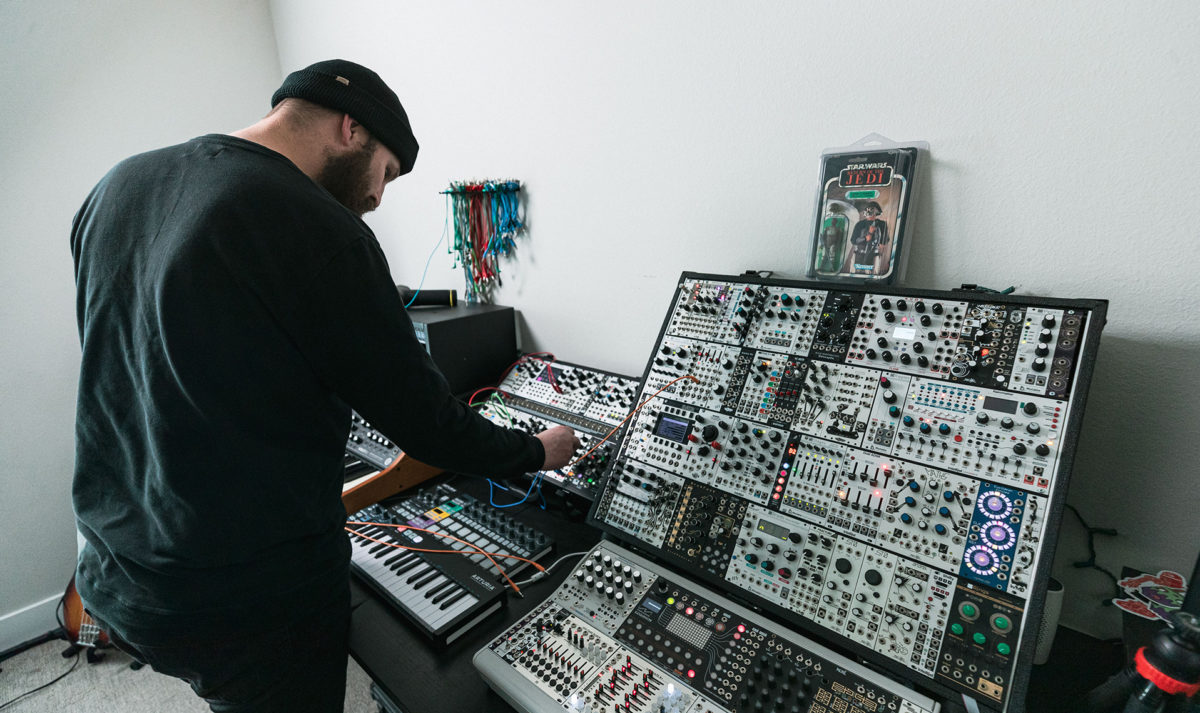
I’m particularly intrigued by the idea of producing music designed to help people sleep. How do you address that particular creative challenge?
When it came to our first big venture into making sleep music, I had to figure out a way to put all of it together. I had just started getting into modular music, where the sounds were there when I made them, then gone once I unpatched – like thoughts, in a way. I would run them into my DAW and add a ’verbed-out piano or some type of chords from a pad I found.
I tried to apply those concepts and create focal points for people in the music – buried elements that people can look for and find within the track. In meditation, we use a practice called focused attention, and that focus can be something visual like a rock on the ground or a sound. Growing up, I would use music all the time to fall asleep. Even some heavy stuff that you would think is counterintuitive – who falls asleep to Sepultura records? I’d be listening to what the bass was doing, or how long the sizzle on the cymbals lasted, or what effects were on vocals or guitars. Then I’d pass out. Focused attention.
As the first launch of Sleep started to gain traction, we started to include environmental sounds that I’d recorded out in the world using a 360º mic made by my friends over at 3dio. Rivers, wind, frogs… Then I would take some of those sounds and marry them to these new sleep stories we were developing. I would build these fictitious places of sound, based on real places, using library SFX or my own field recordings. Again, I applied that concept of focused attention – burying little things in the recordings for people to focus on during the narration.
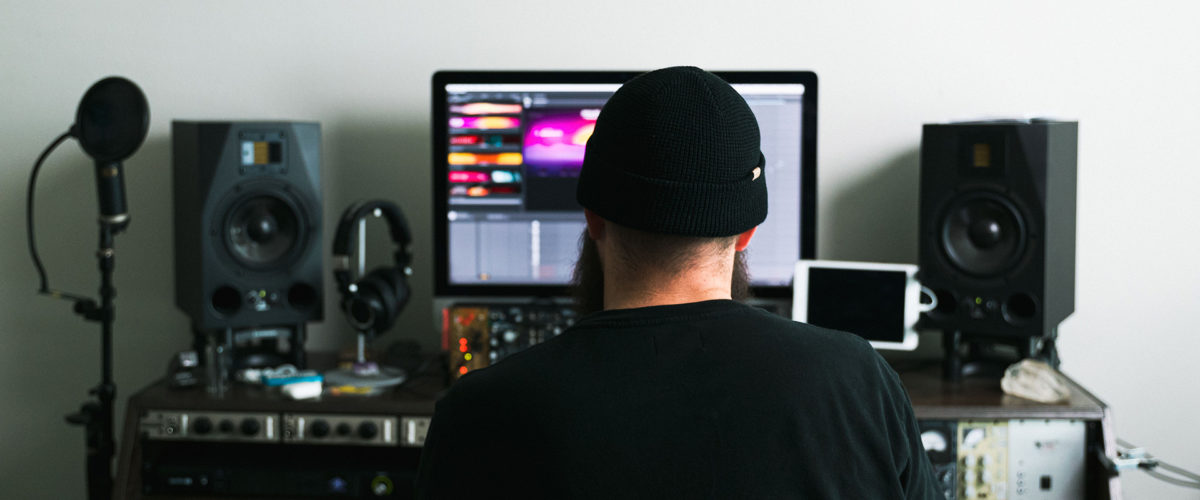
What was your first experience with Native Instruments software?
KOMPLETE was the first professional software that I ever got. I was working on this Wing Commander-type videogame, and the creator wanted it to sound similar to other starship games, which meant strings, brass, etc. It wasn’t a huge payday or anything, but I thought, ‘OK, I’ll use that money to drop on KOMPLETE’. Go big, get the hard drive, get all those synths, the brass, the strings, articulations that I would never know to play… Jumping into MASSIVE and hearing all those wonderful presets… I didn’t know how to use it at the time but I didn’t think I should just chuck a preset on these cues – I found sounds I liked then tweaked them a bit. The slightest thing could make such a difference. Adding reverb or delay, putting a low-pass on a pad…
Would advise anyone just starting out in music production today to come at it from that angle?
Making your own sounds helps you learn the what, why and how, and gives you ownership of what you’re trying to achieve. I’m not saying everyone needs to hit the ‘Init’ button and start with some sine waves, or just tweak presets, but both are ways to reach the same place: making your own sound that you think works.
If you really want to get crazy, you can make your own KONTAKT instruments. Sample an old piano and play it in your DAW. Quantize it! I like to mix things up a bit and have analog and digital meet. How would this piano sound if I ran it into the vinyl effect on an SP-404, then back into CHORAL to help modulate some of those highs? It’s all limitless to me, sculpting sounds and never being too stuck in your ways about production or ideas.
You use STRAYLIGHT and MASSIVE a lot, but what are your other go-tos?
Who doesn’t like a granular synth? Morphing and slicing up fragments of space and time. It’s the most insane thing ever. STRAYLIGHT does just that, and it also has a little ‘dice’ shuffler. I like randomized parameters – infinite possibilities and endless change.
I also love LO-FI GLOW at the moment. We’re working on making more focus music right now, and currently I’m a bit obsessed with some of these lo-fi and chill beats stations I’ve been finding. We’re developing music that isn’t so interesting that it pulls your attention to it, but at the same time, isn’t so boring that you feel punished by the experience. It’s like putting a mood on while you focus on sending emails or studying or doing dishes. It takes me back to my roots of recording an entire drum kit on an SM58 into an old tape deck. It sounded horrible then, but now it sounds cool.
My team and I also use MASSIVE X and all the KONTAKT stuff for sound design. But my absolute favorite things ever are the Nils Frahm pianos – ultimately, I just want to sit in a dark room with NOIRE, play in C minor and pretend I’m a piano player. I saw Nils here in LA. He played that same piano, and I remember thinking, ’Wow, man, this is magical’. Then, a few months later, NI launched it. I couldn’t believe it – now I can pretend I’m playing as Nils from my little studio.
With your modular system and so much other analog gear on hand, how do you decide when to use hardware or software?
I’m just obsessed with gear, really. I like finding new and unique things, and I don’t let anything get in the way of that. It’s all about exploration and understanding how certain things work on a device or in an instrument. What’s the soul of this thing, and what can its voice evoke? You can also let the two sides speak a lot more these days. I have Meris pedals that I can control via MIDI, and I can have modular devices send MIDI to my computer to control a parameter or sequence. What I learn in the box I can apply to outside and vice versa. I don’t believe in limiting myself or closing myself off to potential or ideas.
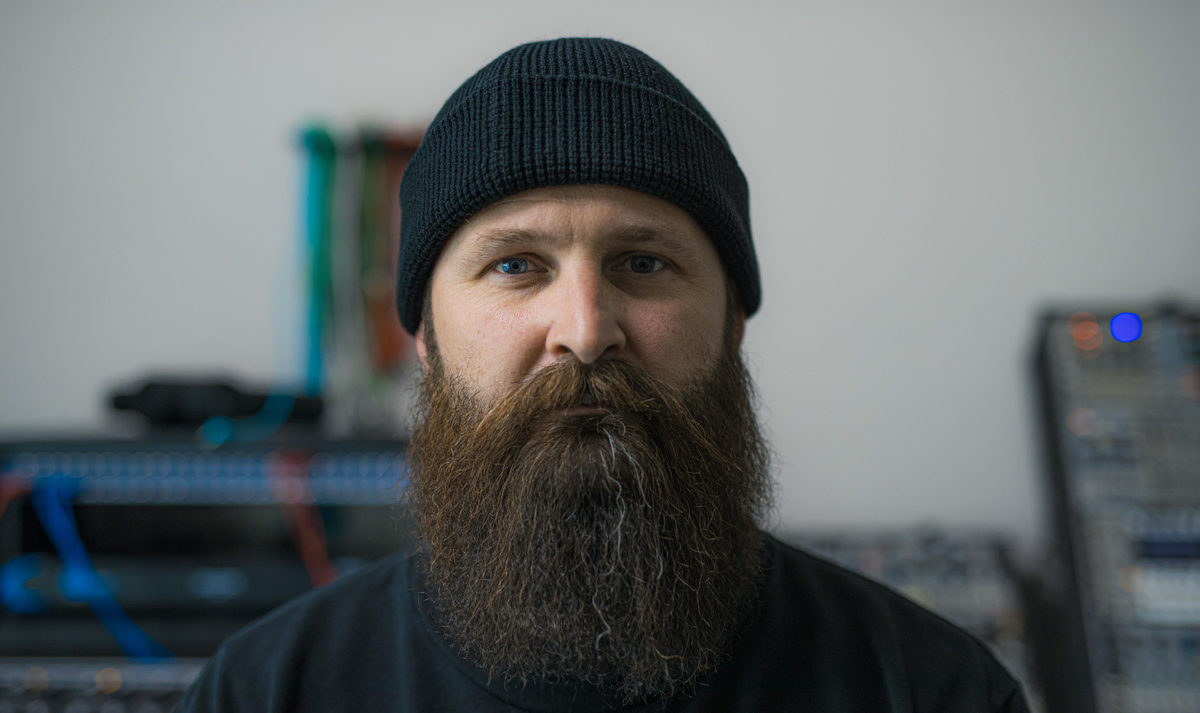
Your involvement with Headspace presumably leads you to live a mindful lifestyle yourself…
Right now, we’re in the middle of this worldwide event that, for some people, is devastating. From loss of life and sickness, to financial insecurity and anxiety, political problems, etc. It weighs on people. It weighs on me. Being holed up in my studio isn’t a big departure from my normal everyday life, but I have noticed that my reaction to this has been to work more and more. And while work is what I love to do, too much of anything can put you out of balance. My brother asked me if I wanted to try making some bread and that he would drop off some starter, so I said sure.
I’ve always wanted to learn how to bake a basic loaf of sourdough bread. I romanticize sitting in a forest in front of a fire with a cast iron pot full of baking bread. My brother dropped off a little starter and some flour, and I just started to apply that same curious-mind approach I use with music and gear to bread. Now I’m baking almost every day. It’s become this thing I do to keep me active and productive while I’m not sitting in the studio.
It’s not about the end result for me, and that applies to music, creativity, meditation and bread. My focus is, ‘What am I doing now, in this moment, and how am I approaching that?’. How can the things I do create a lasting, positive experience for people, and how can I approach my own experiences mindfully? We’re all humans, we all make mistakes and do and say things we don’t mean, and it’s going to keep happening. We do what we can when things are bad, and I believe that if we work towards the perspective that we’re all in this together, and we explore that understanding of compassion, we’ll see this is a shared human condition and the world will be a much better place to live for everyone.
Interview by Carmen Rizzo








